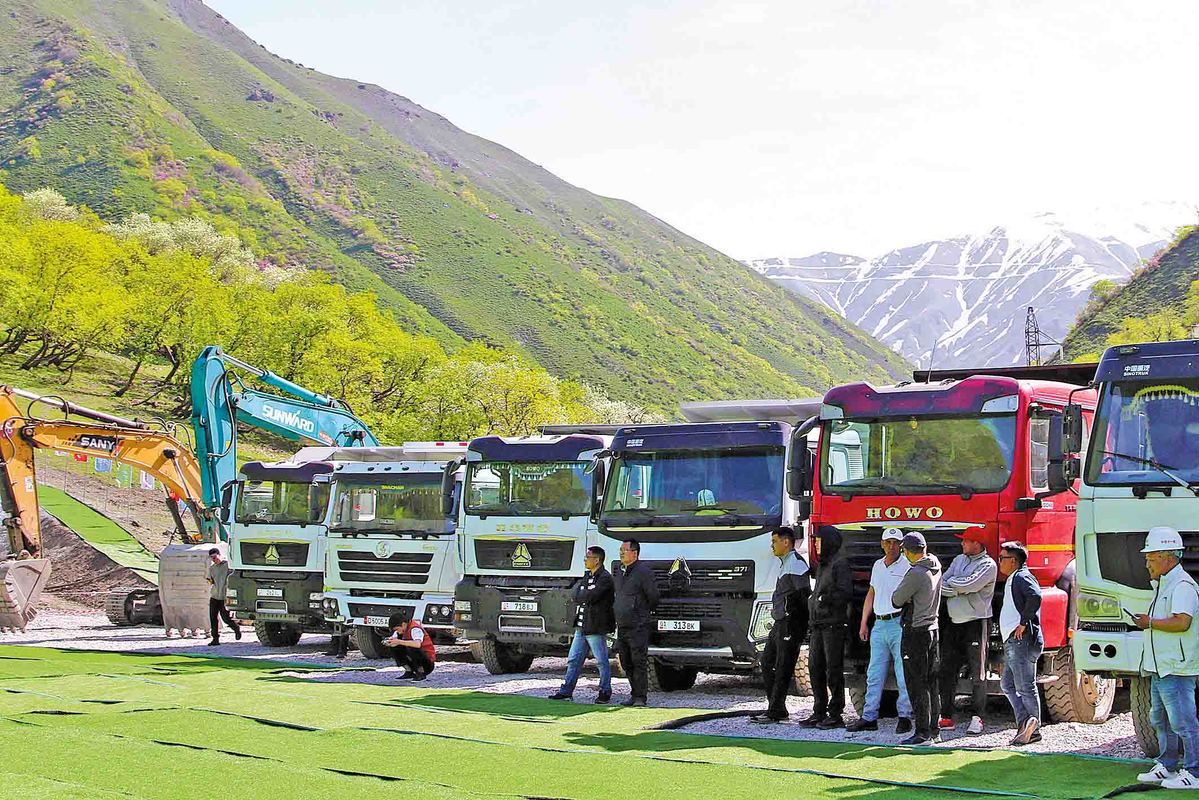Chinese SOEs to expand market presence in Central Asia


Driven by shared strategic interests and accelerating regional economic integration, China's centrally administered State-owned enterprises will further broaden their business engagement in Central Asia, bolstering the region's power supplies and infrastructure development, said company executives and market watchers.
In response to rising cross-border infrastructure demands and under the framework of the Belt and Road Initiative, they said that central SOEs are eager to ramp up investments in areas such as renewable energy, smart grid systems, modern railroads and other infrastructure projects in the Central Asian economies of Kazakhstan, Kyrgyzstan, Tajikistan, Turkmenistan and Uzbekistan.
"These projects are not only improving local energy security, but also boosting regional connectivity and supporting industrial upgrading," said Wan Zhe, a professor of regional economic development at Beijing Normal University.
Among the key players is China International Water and Electric Corp, a subsidiary of Beijing-based China Communications Construction Group Co. After bringing two hydropower stations online in Kazakhstan since 2013, the company plans to deepen its cooperation with more Central Asian countries, enhance local livelihoods and contribute to regional prosperity in the years ahead.
Wan Qizhou, chairman of China International Water and Electric Corp, said, "We will continue to leverage our expertise in water conservancy, power generation and clean energy to make greater contributions to building a closer China-Central Asia community with a shared future."
As part of these efforts, the company has already achieved tangible results on the ground. Commissioned in 2021, the Turgusun hydropower plant, with an installed capacity of 24.9 megawatts and an annual output of up to 79.8 million kilowatt-hours, has significantly eased power shortages in Kazakhstan's eastern region.
Pu Qingsong, chairman of China Railway No 5 Engineering Group Co, a subsidiary of China Railway Group, said the company has completed 12 infrastructure projects to date, including roads and water conservancy works, in Kyrgyzstan and Tajikistan.
The Chinese company won the bid in May to construct a part of the China-Kyrgyzstan-Uzbekistan railway project.
"Central Asia holds great development potential and offers vast market opportunities, particularly in infrastructure construction," said Pu. "We will continue to deepen our presence in the region and step up efforts to advance economic and trade cooperation as well as infrastructure connectivity in the region."
Central SOEs' engagement in Central Asia is no longer limited to transportation and energy, as major projects in public infrastructure are also taking shape.
China National Machinery Industry Corp, a Beijing-based central SOE, delivered the Olympic City project to its client in Tashkent, the capital of Uzbekistan, late last year. This is the first large-scale collaboration project between China and Uzbekistan that has adopted Chinese standards in terms of design and construction. It is currently the largest sports complex in Central Asia.
These projects feature modern infrastructure built with Chinese technology and are moving ahead quickly. They will not only support Central Asian nations' development goals, but also inject new vitality into the growth of the Belt and Road Initiative, said Gao Lingyun, a researcher at the Chinese Academy of Social Sciences' Institute of World Economics and Politics in Beijing.
As infrastructure connectivity improves and large-scale cooperation projects take root, the foundation for trade and economic integration between China and Central Asia has become more robust, Gao said.
"This deepening cooperation, particularly in energy and transportation, is translating into more efficient cross-border trade and stronger regional value chains," he added.
Road freight accounted for 51.8 percent of China's trade with the five Central Asian countries in 2024, compared with 19.9 percent in 2020, according to the General Administration of Customs.




































